How to Help an Egg Bound Chicken (Or Is She Constipated?)
Welcome! This article contains affiliate links, meaning I get a commission if you decide to make a purchase through my links, at no extra cost to you.
My Indian Runner Ducks always look a little bit like penguins, but if my chickens start waddling around like Pingu or Feathers McGraw, I know it’s time to worry.
Any self-respecting chicken adopting an upright stance like a penguin is likely to be egg bound, which means she’s struggling to move the egg through her oviduct effectively.
This condition sounds benign but it’s potentially fatal and, if you don’t treat the problem correctly, your hen could have just a few hours left to live.
How to Tell the Difference Between an Egg-Bound Chicken and a Constipated Chicken
Promptly identifying an egg-bound chicken is the best way to save her, but the symptoms aren’t always that easy to spot.
A chicken with this condition may, for example, take to the nest box for most of the day, the same way a broody hen does.
Although an egg-bound hen may also develop chronic constipation, this isn’t the only cause. Chickens that don’t have access to fresh drinking water or that have excessive protein in their diets are also at risk of constipation.
The easiest way to establish if egg binding is preventing your hen’s normal bowel movements is by performing a simple physical examination.
Start by feeling your chicken‘s stomach (gizzard).
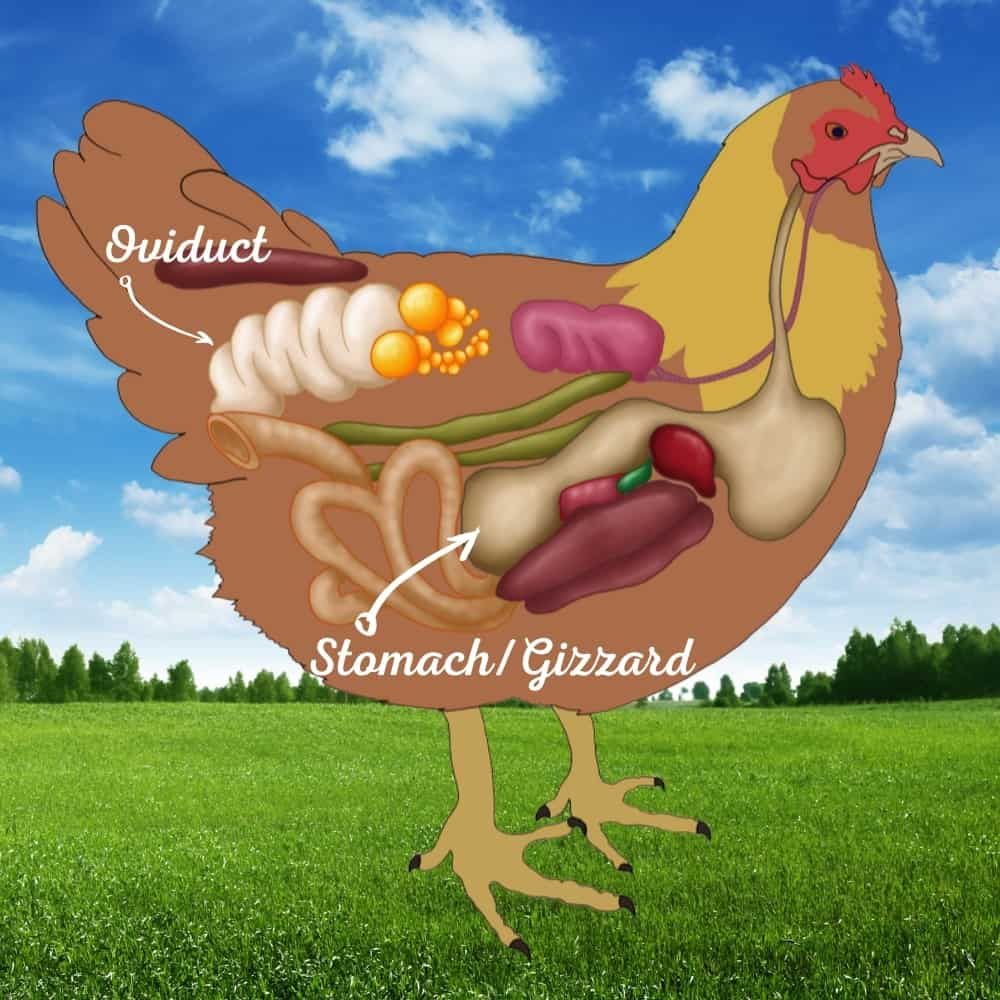
If she is egg bound, you’ll notice her abdomen is hot to the touch and should feel a hard egg-shaped lump in her oviduct.
A constipated chicken’s stomach will also be hard and potentially hot to the touch, but that hardness will be more widespread, as opposed to egg-shaped.
If you’re still unsure whether your chicken is egg-bound or suffering constipation issues, and no egg is visible from the outside, you may need to perform a vent check.
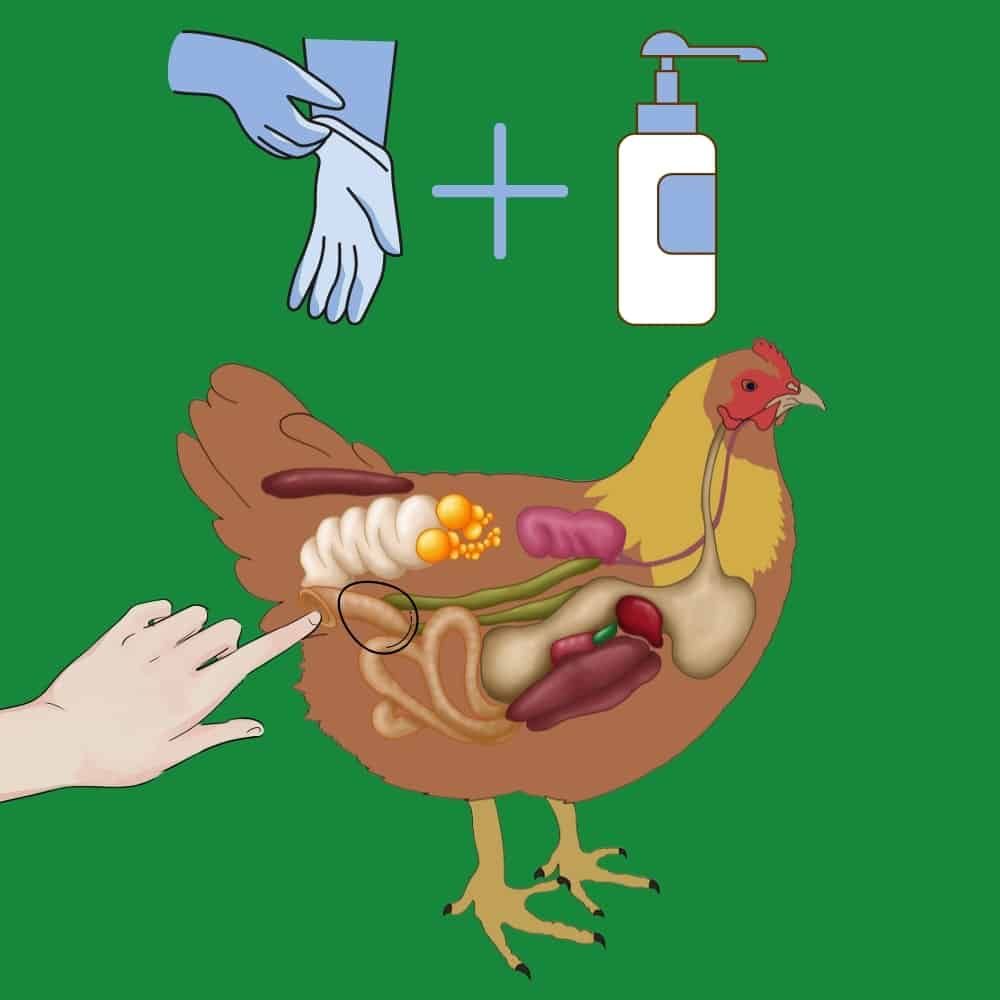
To do this, you’ll need some surgical or rubber gloves and water-based lube.
Some chicken owners suggest using olive oil, but this can go rancid, making constipation worse, so a water-based lubricant is a better option.
Rub a little lube around the vent before inserting your finger to feel for an egg.
You shouldn’t have to go far before you feel the egg so, if you can’t feel anything approximately two inches into the vent, you can be certain your chicken is suffering from constipation rather than being egg bound.
If you can feel or see an egg, don’t panic, but do start treatment immediately.
Three Ways to Help an Egg-Bound Chicken Survive
#1. A Warm Water Bath
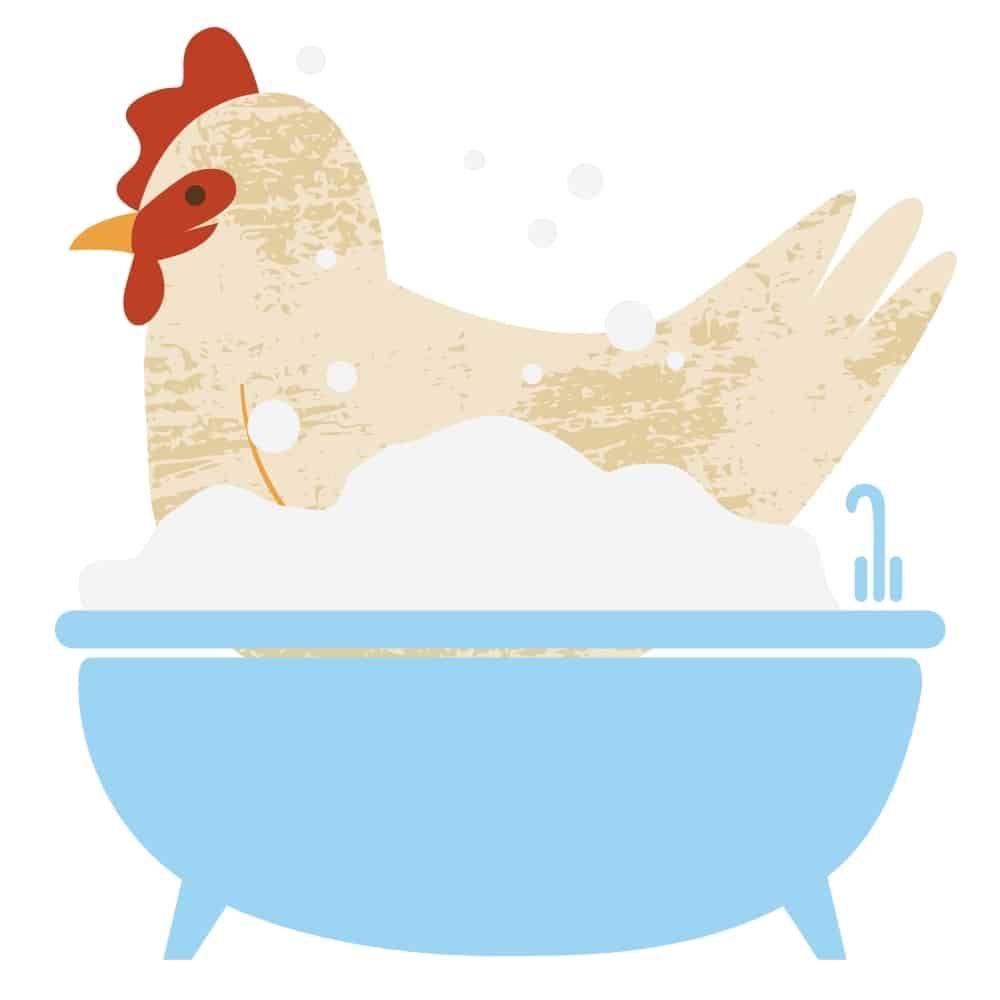
The first step for dealing with egg retention is to try a warm water bath with Epsom salts. This method is said to help relax the chicken and relieve the pressure and can be used to help alleviate constipation as well as for helping an egg-bound hen.
A bucket of warm water with a handful of Epsom salts dissolved in it is all you need.
Hold your chicken in the water for 15 to 20 minutes and, if you’re lucky, the abdominal straining will start to ease off, and your chicken may even poop in the bath.
Once you’ve finished bathing your egg-bound chicken and dried her off using either a towel or hairdryer, you need to move her to a quiet, darkened area where she will feel more relaxed and therefore find it easier to lay the egg herself without veterinary intervention.
To make the process easier for her, apply a little more lubricant to the vent and offer her water with added electrolytes and vitamins, like this one.
You may need to repeat this pampering process several times over the next 24 to 48 hours to move the egg along the oviduct.
#2. External Massage
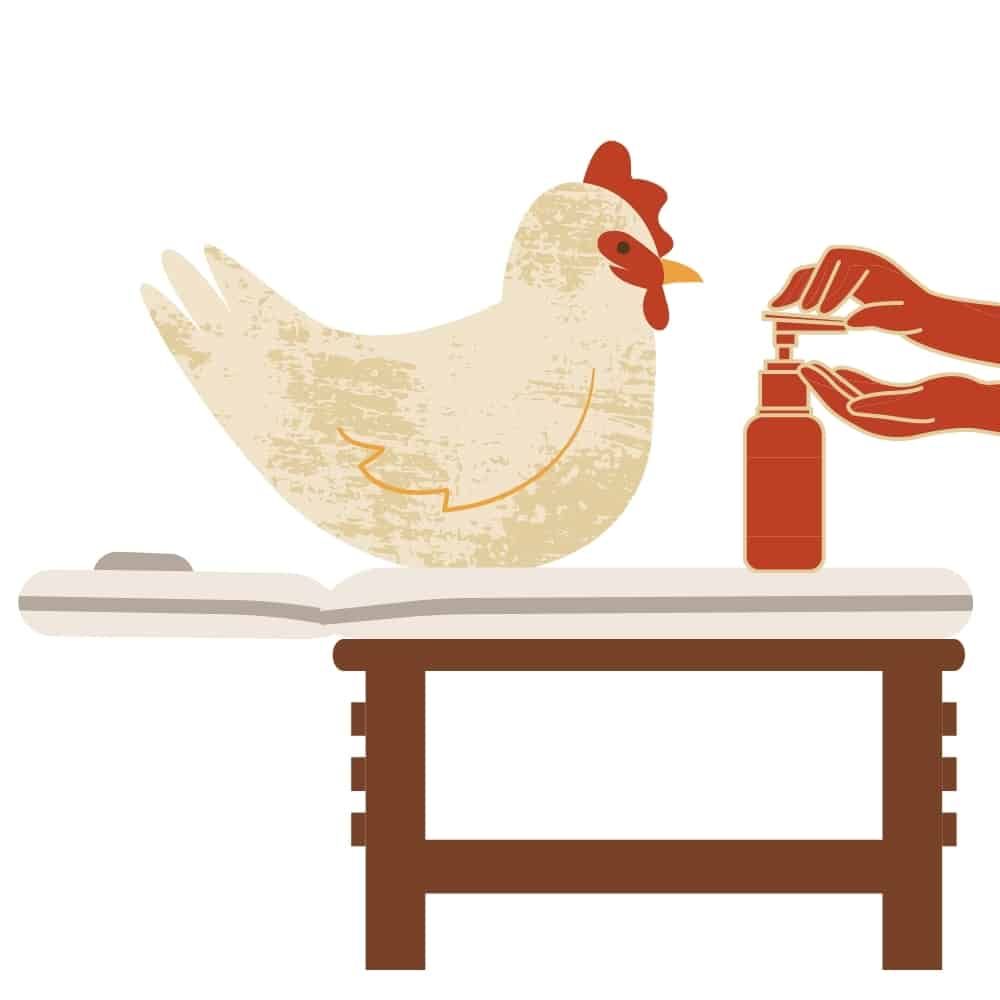
If the warm bath technique proves ineffective and you feel confident about your massage techniques, you can try externally massaging your hen.
Only attempt this if your hen is still bright and hasn’t gone into shock and always be as gentle as possible.
Start by palpitating the abdomen until you feel the egg, then gently manipulate it, moving towards the vent.
Try to mimic the bird’s natural compressions by applying pressure for three seconds before releasing. Repeat this several times, checking to see if the cloaca starts to open and the egg appears at the vent.
Keep an eye on your chicken throughout the manual manipulation, watching for signs of stress, such as accelerated breathing.
Once the egg is visible, apply more lubricant to the vent or use a Q-tip with saline solution to gently roll the cloaca back along the egg.
Once this process starts, the egg should slip out fairly easily.
If it doesn’t, you’ve got just two options left – you can either attempt to remove the egg yourself or call a veterinarian in to assist.
#3. Egg Removal
Removing a retained egg can be extremely dangerous, and a broken egg could prove fatal for your hen so, this is a last-resort approach.
This method should be attempted only when the egg is visible from the outside.
To remove the stuck egg, you’ll need confidence, a steady hand, and the following equipment:
- 18 – 20 gauge needle
- Large syringe
- Lubricant
Rub a little lubricant around your hen’s vent before inserting the needle and syringe.
Gently make a hole in the shell with the needle and suck the egg contents into the syringe.
Once the egg is empty, it should collapse, allowing the hen to pass it more easily.
Some chicken owners recommend using tweezers to remove the collapsed shell but doing this can cause more harm especially if a sharp piece of shell cuts the chicken as it’s removed.
Most veterinarians recommend leaving the chicken to pass the shell naturally, which it should do within a matter of days.
Check out this informative video for more details on manual manipulation and egg removal.
How to Prevent Egg-Binding In Chickens
As with any health issue, prevention is always the best option, and it’s much easier to reduce the risk of egg binding than it is to treat an egg-bound chicken.
The best approach for backyard chicken keepers, therefore, is to ensure the egg-laying process goes smoothly.
Free-range chickens are less susceptible to egg retention because they enjoy a more balanced diet and plenty of exercise, which helps to keep the amounts of fat to a minimum.
Obese chickens are far more prone to egg binding because their muscles aren’t as strong. That may result in weaker contractions which makes it harder for the hen to get the egg out.
Elderly chickens are also at higher risk, as are young hens, or pullets, that have been encouraged into premature laying through the use of a heat lamp and extra lights.
Worm infestations can also cause problems such as egg binding, so treating your flock regularly with an effective dewormer, like diatomaceous earth, can help prevent such conditions and ensure proper egg development.
Alongside a balanced diet, regular deworming can help ensure your chickens don’t develop calcium tetany and other problems that cause them to produce excessively large eggs.
A poor diet is one of the main causes of egg binding as it leads to calcium deficiency so, feeding your chickens a combination of high-fiber foods and leafy greens is the best approach.
Many commercial poultry feeds, like this one, are designed to provide your chickens with the perfect balance of dietary fiber and adequate calcium.
Making sure your chickens have access to clean water will also help maintain their health and reduce the risk of egg yolk peritonitis, as well as constipation issues and egg binding.
Identifying an Egg Bound Chicken May Save Her Life
I’ve been a backyard chicken owner for nearly 15 years now and have only had to deal with an egg-bound chicken once. Sadly, I wasn’t experienced enough to deal with the problem, and she passed away.
Although egg binding isn’t a common problem in backyard flocks, it is a life-threatening problem that often requires veterinary intervention.
Knowing how to identify egg retention and what steps to take to treat the problem, however, will give your hens the best chance of survival.
An even better approach is to prevent the problem from occurring in the first place by ensuring your chickens have plenty of space to lay in the chicken coop, space to exercise, and access to both fresh water and fiber-rich foods.



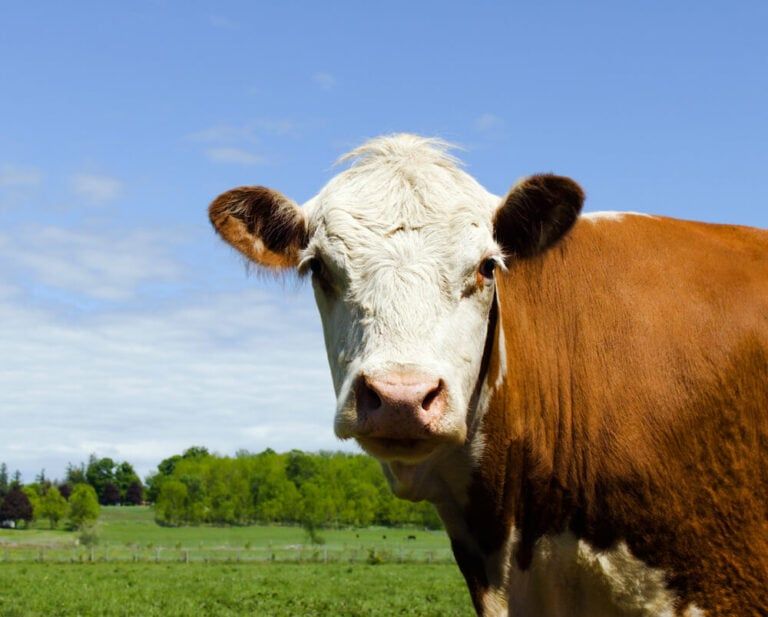
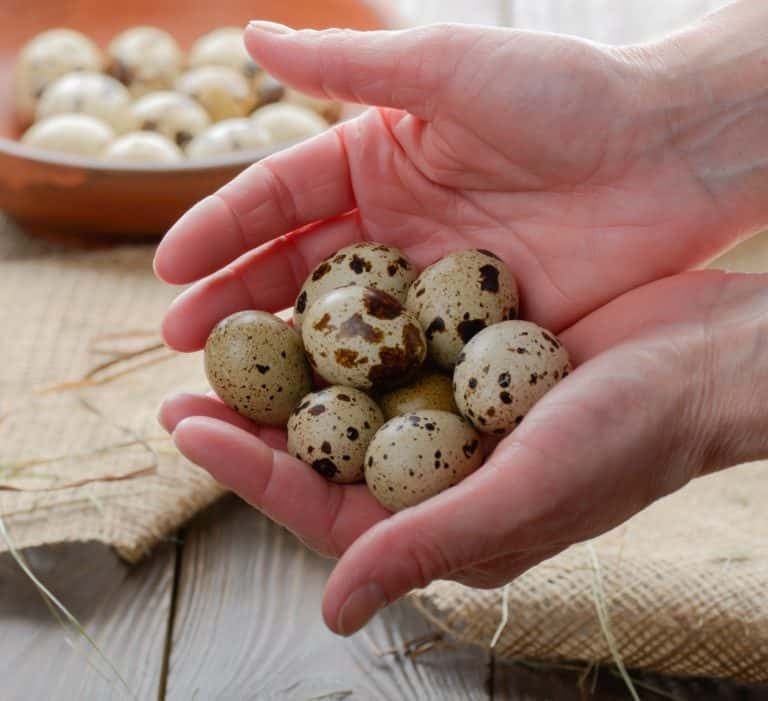



I learnt so much from this article. Although I’ve heard of egg bound chickens I didn’t know you could do all these magical things to help. I know it takes an effort to lay an egg, cos have you heard the commotion at egg laying time in the hen house. I will be watching more closely in the future, but using all the prevention methods for egg bound chickens mentioned in this article. Thanks Nicky for this very informative article and great pictures… they made me smile out loud.